https://www.youtube.com/watch?v=i3sP2jwG9jc
Why modern sandwich bread is different from 'real' bread
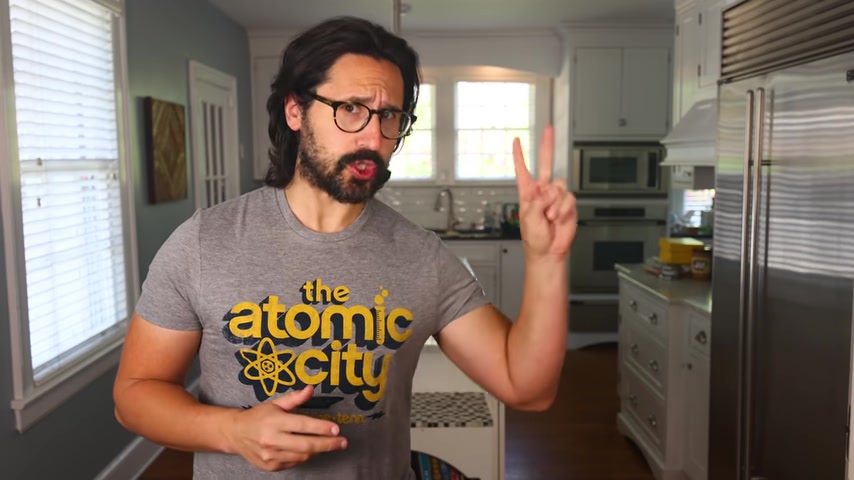
You ever noticed that grocery stores in the United States at least generally have two totally different bread sections .
There's the bread aisle where you get loaves like this and then there's the bakery section where you get loaves like this , you know , bread .
So if this is normal bread , then what do they call this ?
I mean in the industry , what do they call a loaf like this ?
That is white pan bread sandwich bread .
That's another name for it .
That is Dr ELISA Carley , a Professor of Baking Science at Kansas State University .
They grow just a little bit of grain out in Kansas and with the help of Dr Carley , I'm gonna give you five reasons why this is different from this .
This is a different product that evolved over the course of the 20th century to serve a different purpose .
It's all formulated to withstand fast processing and being able to carry butter , jelly , cold cuts , et cetera .
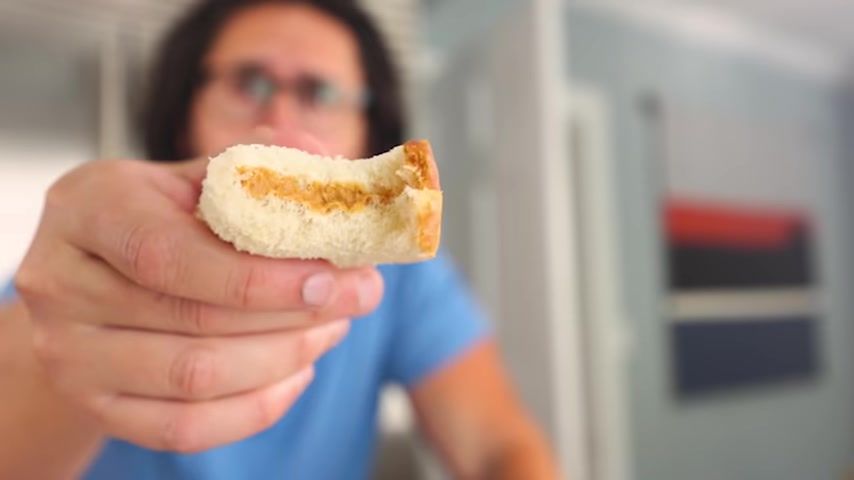
So it needs to have that resistance as you spread , it needs to really hold everything you want to put on it and yet also be soft enough that you can bite through it without compressing the contents of the sandwich and squeezing them out the sides .
It needs to be soft and another important information , it needs to last .
It needs to last before you buy it and after you buy it at least a week at your house .
Yeah .
Unless you've baked bread yourself at home with just flour , water , yeast and salt .
You might not even know how short lived traditional bread really is .
Here's this very traditional loaf I baked in a video a few weeks ago , crusty outside , soft inside , delicious .
But here's the part I didn't show you here .
It is the next day like 16 hours hours after I baked it rock hard , inedible unless you grind it into bread , crumbs or soak it in egg to make French toast or do any of the other millions of things that people used to have to do to deal with day old bread .

And one of the main issues that causes bread to get stale is that starch wants to come together and form a crystal again .
And starch crystals are tough and then you start feeling that dryness in your mouth .
That's not lack of water that's really starch wanting to come back together .
That's called retro gradation .
The starch going back into the crystal formation , it was in , in the grain before you got it wet and baked it into bread .
That is retro gradation , staling bread going hard .
Plus there's also mold to worry about fungus that grows on bread , all bread .
If given time , if you want bread to last two weeks , there's no way you can't use some type of preservative .
It's just not feasible .
Bread will mold in 3 to 5 days .
That's just the nature of the product .
So the modern sandwich loaf evolved to address all of these issues .
Listen , I am not here to defend or to demonize products of our industrialized modern food system .
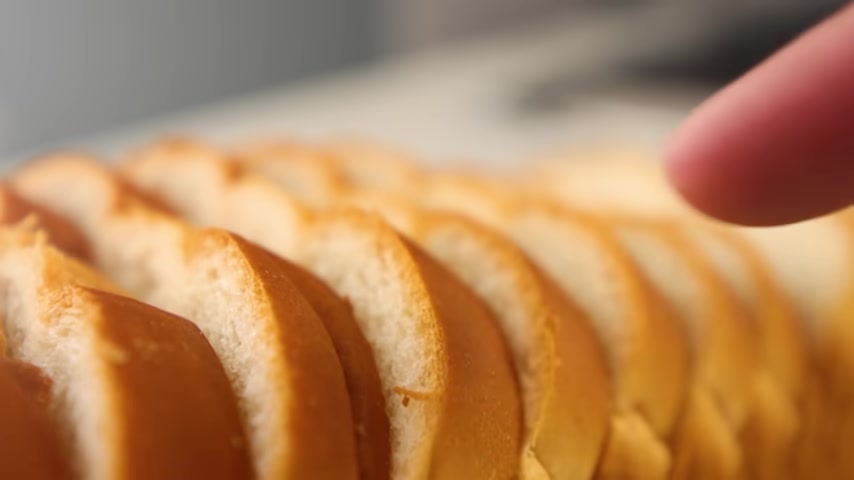
I'm just here to explain why they are what they are .
Here we go .
First thing that makes this different from a traditional loaf of bread , added sugar and fat .
And when I say added , I mean , sugar and fat beyond what was in the wheat naturally .
Now look , people have been using sugar and fat in dough for centuries , but they're particularly important to a dough like this , some kind of added oil or butter .
In this case , that's going to make the bread moist and soft without contributing water to the product , water equals mold .
This is probably the main reason why prepackaged shelf stable baked goods tend to be so high in fat fat gives you the perception of moistness in the mouth without being nearly as hospitable to microbial life as water is .
And there's a lot of water in bread like this compared to something like a Twinkie , which is basically all fat and no water .
That's why Twinkies are going to survive the apocalypse .
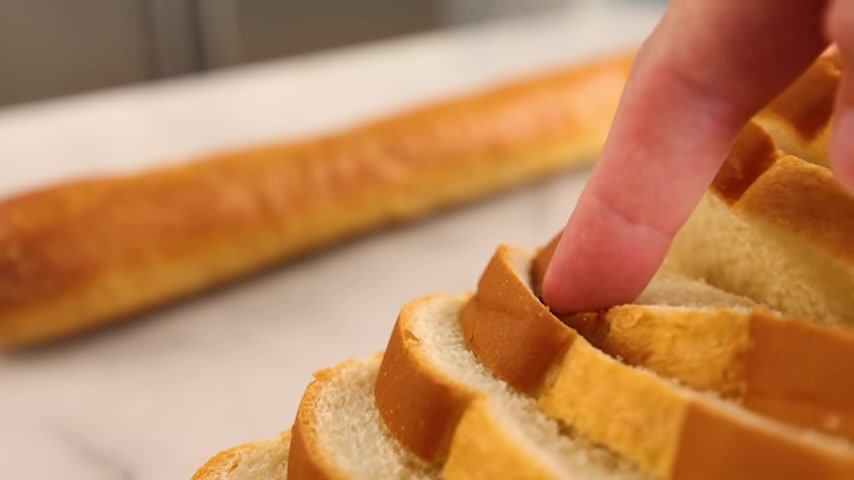
But sandwich bread still lasts longer than traditional bread because some of the water is effectively replaced with oil and oil makes the bread softer and darn tasty .
So does sugar .
Sugar is sweet .
Sugar holds on to water at the molecular level and keeps the bread from drying out over time .
Plus sugar feeds the yeast .
That's thing .
Number two , that makes this different from traditional loaves .
Extra help for the yeast bread like this is inexpensive in part because it's made very quickly and to rise dough quickly , you need to give your yeast a boost .
The acceleration is usually done by giving it good conditions .
So you make sure it has proper amount of food , which means a little bit of sugar to help it grow .
Also a little bit of malted flour .
Very common in these breads .
Malt is grained that you get wet and allow to sprout to start growing into a new wheat plant .
You do this , you activate amylase enzymes in the wheat that break the starch down into sugar .
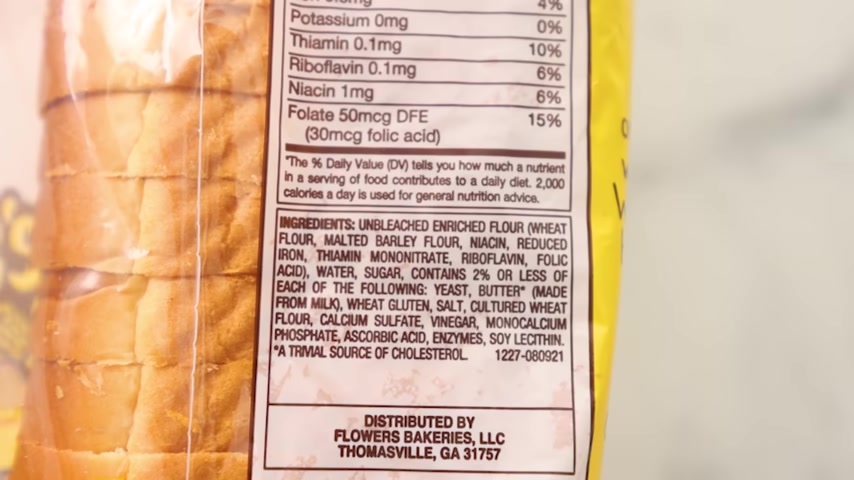
The yeast can eat as well as prote ase enzymes that break the proteins down into nutrients that the yeast need .
Every yeast needs some time to adjust to the environment .
If I give it the malt , it adjusts faster .
Now , here's a less familiar yeast booster calcium sulfate , a mineral additive .
It gives it the right condition .
It's one of the nutrients the yeast needs .
It acts somewhat as a buffer , a buffer in this context .
Something that prevents swings in ph that can happen over the course of the fermentation and slow the yeast down .
Plus , as Dr Carley said , the calcium is also a nutrient for the yeast .
Yeast are going to find calcium ions in any dough that you put them into .
But if you give them more of them for their metabolism , they're going to be able to work faster .
They need calcium ions .
And hey , so do we food for the yeast food for the human ?
Sure and well fed yeast will quickly make bread that is as soft and fluffy as my mattress from Helix sleep .
The sponsor of this video actually because I prefer a somewhat firmer mattress .
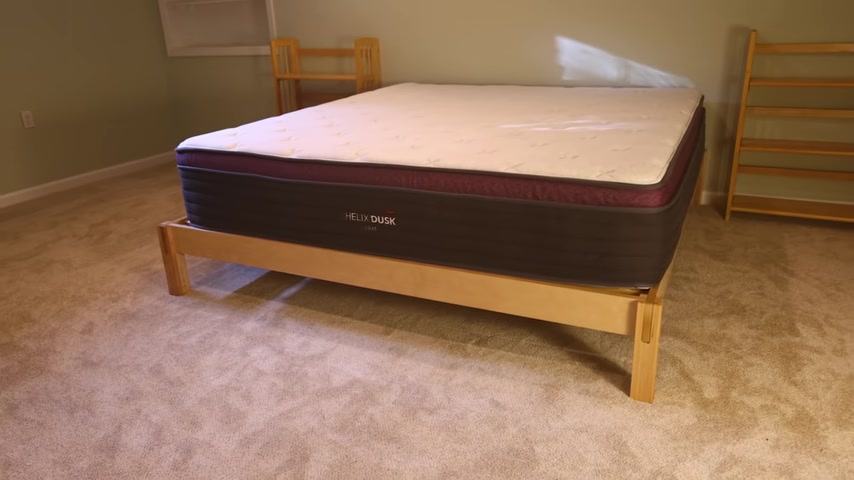
Helix matched me with their dusk , which is a hybrid spring and foam mattress .
It's considerably less squishy than sandwich bread and yet it compresses like sandwich bread down to a tight little roll , which is how Helix was able to ship this to my house in a box .
Shipping is free in the US .
No movers needed .
I dragged it into the room broke the vacuum seal and mattress go poof .
Lauren likes an even firmer matt than I do and this bed has been a great compromise for us .
My back feels great on it .
Go to Helix sleep dot com slash Raia and take their sleep quiz .
They'll match you with something that's perfect for your size and shape and sleep position .
Sleep on it for 100 nights , risk free .
They'll come take it back if you don't like it .
There's a 10 year warranty and there's financing and payment plans available .
Use my link in the description Helix sleep dot com slash Raia and you'll save up to $200 on your Helix plus , get two free pillows .
Thank you Helix .
Anyway , thing number three that makes this bread different how the dough is mixed .
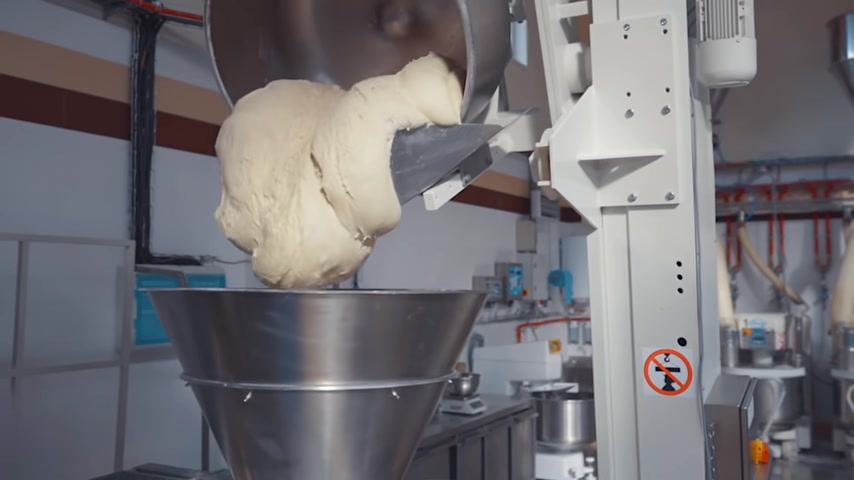
Ingredients are mixed in very powerful mixers that really blast the dough with shearing force .
So much force that some industrial mixers actually have to use cold water to cool the dough down .
So much friction , you mix the dough really hard to get the job done fast .
Yeah , obviously , but for other reasons too , like you mix the dough hard to work oxygen into the dough .
Added oxygen in the dough will give you a faster though not necessarily a tastier rise .
This is explained by Doctor Emily Bueller in her indispensable book bred science linked in the description .
So when there's oxygen , the yeast um are able to do respiration which produces lots of carbon dioxide and less flavor .
And then when they run out of oxygen , they switch to their f what the actual fermentation action which is less carbon dioxide .
But the ethanol or flavor molecules .
You heard that right ?
By the way , all yeast bread has booze in it and that alcohol contributes greatly to the flavor .
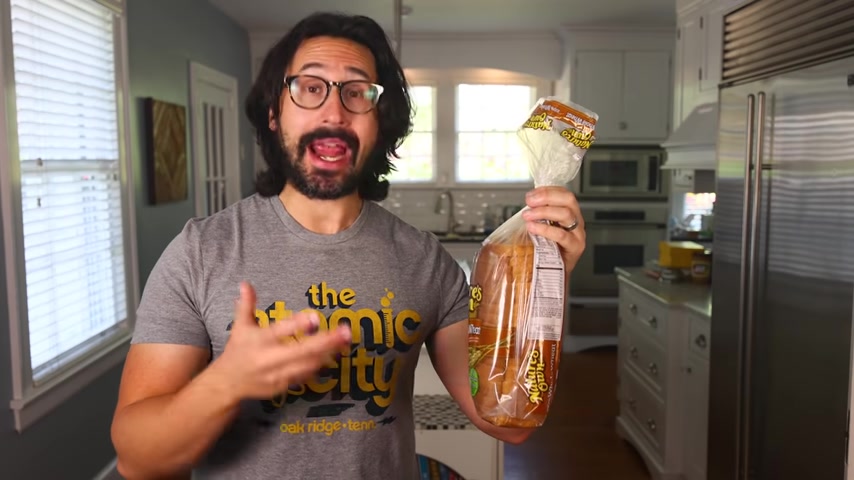
Though this style of bread might have a little less alcohol in it because they work a lot of oxygen into the dough and that makes for a quicker area rise in some factories .
The mixing process is even more exotic .
They manipulate the air pressure environment to make more bubbles or to manipulate bubble size .
This is characteristic of the Charliewood bread process developed in the UK in the 19 sixties for making this kind of sandwich bread .
Charliewood was developed specifically to deal with a problem in Britain where the native wheat was kind of low protein , less gluten means less fluffy bread helped thing number four , that makes this bread different dough conditioners or improvers .
This is a very broad category of minor ingredients and we're gonna march through some of them , some have exotic names .
But hey , there's a familiar face vinegar , vinegar .
What are you doing here ?
Vinegar is there as an aidant ?
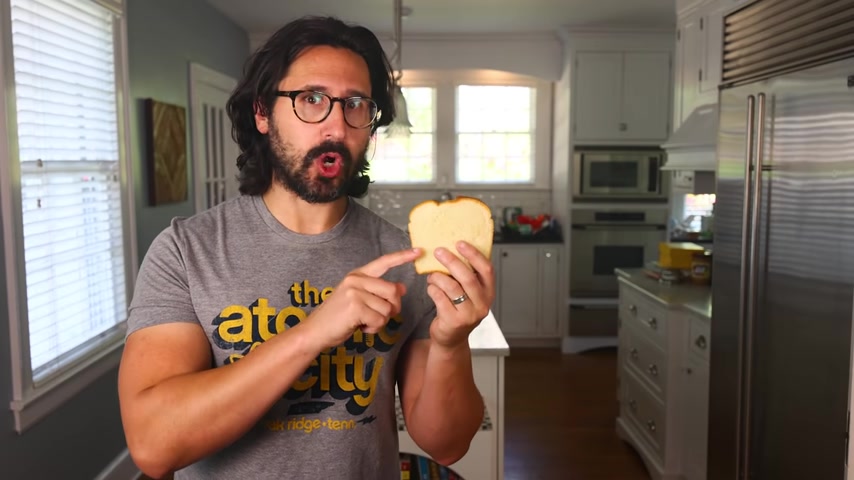
You're gonna see that probably there's vinegar and some other type of mold inhibitor and they work synergistically , one helps the other a common one in this kind of bread would be calcium propionate that works synergistically with the vinegar to inhibit mold because science vinegar and other acidic ingredients do other things to bread as well .
They generally soften bread kind of at the expense of browning but that's fine because no one's going for like a hard brown crispy crust on bread like this .
Another mold inhibitor you might see is cult curd wheat or cultured sugar cultured as in treated with bacteria .
These are what they call clean label preservatives in the food industry , things that you can use instead of chemical preservatives that people might rightly or wrongly regard as unclean .
It's derived from fermentation basically and not chemically derived .
But in the essence , you're trying to make the same molecules that you would in a chemical preservative .
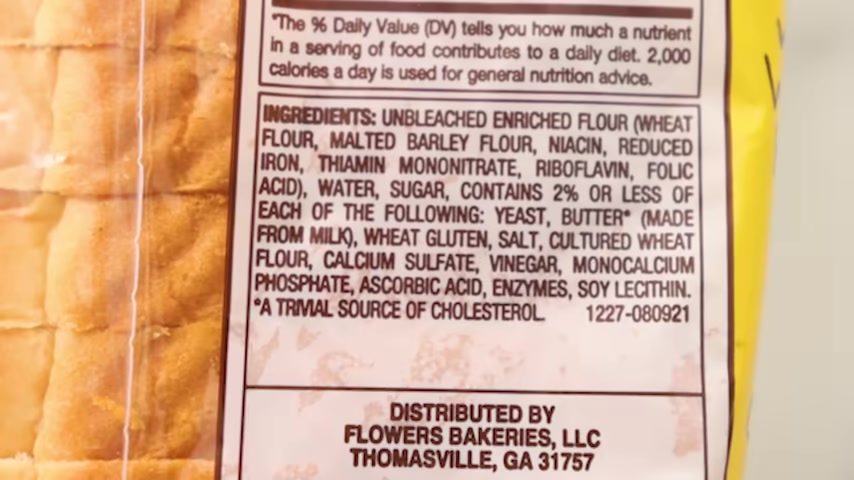
I remember , I just want to remind everyone that this is , it's very , very low amounts and these are all approved .
They're not dangerous substances as much as everyone wants to get rid of them .
Well , bread will mold and mold is actually more toxic than , than a little bit of a controlled preservative .
We'll talk about the relative risk of eating bread with mold .
Another day .
Here's another common dough conditioner enzymes .
Usually amylase enzymes that break down the starch and keep it from recrystallizing staling industry has developed very good , very specific amylas .
Um a few decades ago when they started playing with this , that would just digest your bread and it didn't really work well .
So they really evolved a lot and developed very good amylas that come and just chop off the starch from the ends and just keep it soft enough that it won't retrograde .
Couple other common dough conditioners .
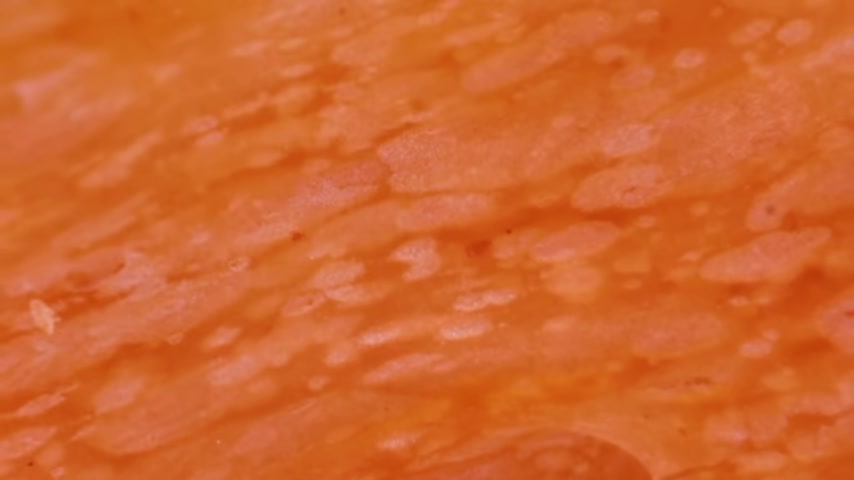
To mention ascorbic acid A K A vitamin C A SCB acid is a dough strength that will actually help strengthen my gluten .
So I get a high volume out of my loaf in the dough .
It will actually oxidize the dough and that will help the gluten be stronger and expand to larger volume .
Hence fluffy bread last dough conditioner less a thin or some kind of emulsifier that helps water and fat bind together and that's gonna help your dough expand as well .
Um Dough is all about bubbles .
You want air bubbles involved in a gluten make trick if you have an emulsifier in there , it helps stabilize your bubbles so they don't pop a pop bubble means low volume thing .
Number five , that makes this bread different .
The bake , these breads are baked in pans , something like this and that little kind of muffin top shape that's at the top of those loaves that is the dough expanding and then kind of spilling over the lip .
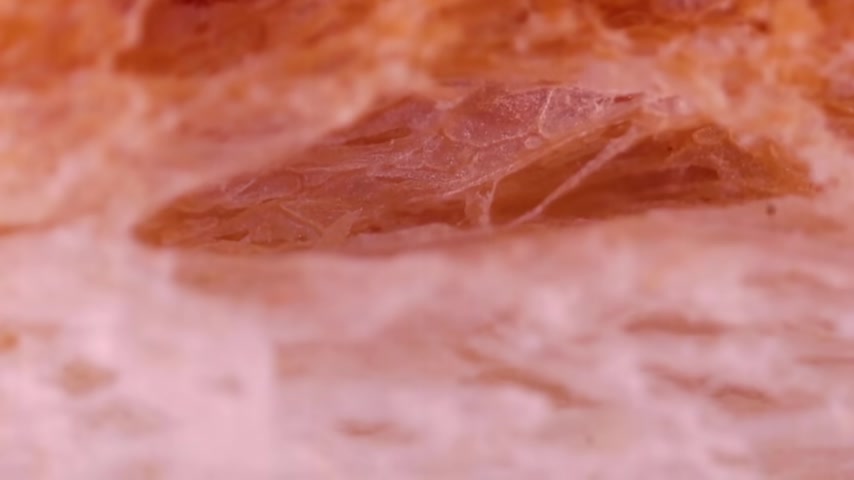
Dearly says they generally bake these to an internal temperature of 92 degrees Celsius .
1 98 F , which is a little low for bread that contributes to the soft cakey character .
And there is no steam used in the baking process for a crusty loaf .
You have to trap steam with a dutch oven at home or in the factory .
They use a steam injection oven to gel the outer starch layer that gel eventually dries out and gets very hard and crispy .
Sandwich bread is supposed to be soft so they don't want a crispy crust .
So no steam and then they rapidly cool the bread down so they can slice it and bag it , the newer ones are , they are serpentine and they are cooling towers .
So the bread comes from the bottom and it serpentine around and it goes up up and then back out .
So that way you don't need the same floor space and a very small amount of floor space , you can cool a lot of bread .
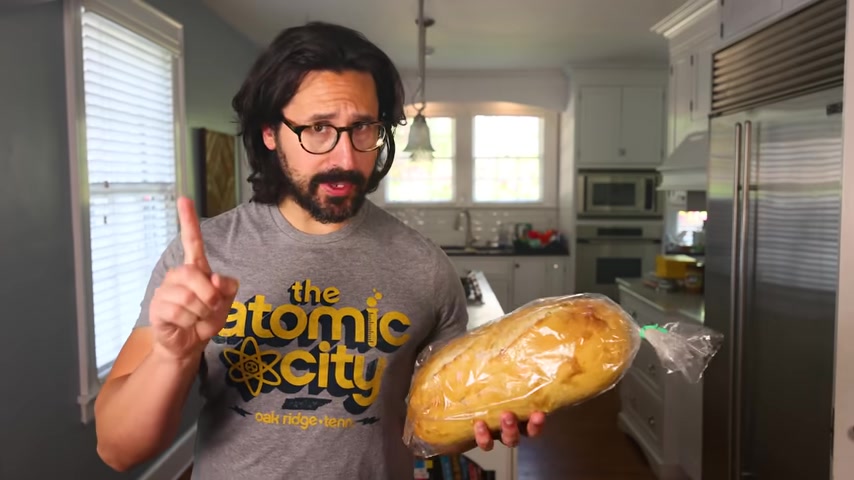
And as industry is evolving , that area is starting to be more contained and more protected um to protect it against contamination and make sure you don't have any mold spores that end up in your bread .
Now , one final note , we like to think that real bread like this from the bakery section , we like to think that this doesn't have all of those exotic ingredients in it and maybe some of it doesn't .
But you know , look closely , a lot of the same preservatives and strengtheners are in here as well .
Why these are artisanal style ?
But there are large volume baked and bakeries fast beats .
So you need some dough strengtheners in there just to help it withstand the processing .
Of course , we like to believe that they're treated nicely and hand fed into the oven .
Well , if they're on a conveyor and they're shaking , they need to resist that .
So that's why I would use ascorbic acid that will help my gluten hold up to all that shaking and bumpy without that , the dough could collapse and degas .
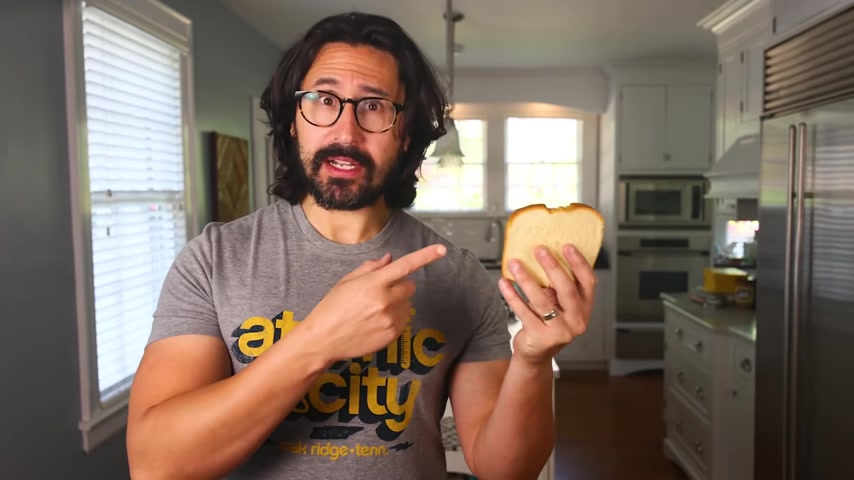
And if you've ever collapsed and degassed , you know what a troubling experience that can be so is bread like this bad ?
Again , I'm not here to demonize or defend it .
I'm just here to explain why it is the way it is .
This is why they make bread like this take from that .
What you will ?
Are you looking for a way to reach a wider audience and get more views on your videos?
Our innovative video to text transcribing service can help you do just that.
We provide accurate transcriptions of your videos along with visual content that will help you attract new viewers and keep them engaged. Plus, our data analytics and ad campaign tools can help you monetize your content and maximize your revenue.
Let's partner up and take your video content to the next level!
Contact us today to learn more.